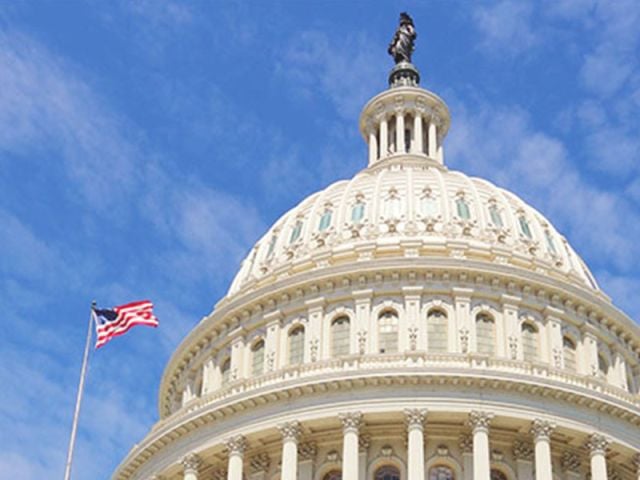MINNEAPOLIS – Wisconsin’s proposed nitrate pollution rule, critical to protecting the health of more than 1 million residents, is in danger of being blocked by a group of lawmakers beholden to industrial agriculture special interests.
Wisconsin faces a growing public health and economic crisis, fueled by years of unchecked nitrate pollution of drinking water from farm fertilizers. More than 1.2 million Wisconsinites are drinking water with elevated levels of nitrate, which is linked to cancer, thyroid disease and other health hazards. In many places, the hazards of nitrate-contaminated water are borne by vulnerable populations, including infants, people of color and people living below the poverty line.
The cost of addressing nitrate contamination of drinking water in the Badger State has already exceeded hundreds of millions of dollars and could reach $1 billion in the next decade.
In response to the crisis, the state Department of Natural Resources has proposed a scientifically sound rule to reduce excess nitrate fertilizer pollution flowing from agriculture operations into groundwater. The rule would require all farms located in vulnerable areas to limit nitrogen fertilizer losses to groundwater so they avoid exceeding the Safe Drinking Water Act limit of 10 milligrams per liter.
For three decades, the EPA has pushed states to develop stringent, scientifically defensible phosphorus and nitrogen limits. So far, Wisconsin has adopted statewide surface water criteria for phosphorus only. It was the first state to do so.
But under the REINS Act, signed by former Gov. Scott Walker in 2017, the public may not get an opportunity to weigh in on the nitrate rule. Under heavy lobbying by the Wisconsin Farm Bureau and the Dairy Business Association, lawmakers hostile to the proposed rule could exercise their authority under the REINS Act to indefinitely delay or kill the rule. This would potentially undermine the ability of state agency experts to take necessary steps to protect Wisconsinites from the growing nitrate drinking water crisis, said Jamie Konopacky, director of EWG’s Midwest office.
“It is critical that state regulators hear from as many residents as possible who want this proposed rule to be adopted,” Konopacky said. “Unless Wisconsinites step up and demand action to clean up nitrate in our drinking water, powerful supporters of industrial agribusiness in the legislature can and will do what they can to stop this rule from going forward. The importance of this rule extends beyond Wisconsin’s borders. If implemented, it will give other states a roadmap for adopting their own rules to protect the public from tap water tainted with fertilizer pollution.”
Konopacky said 70 percent of Wisconsin residents rely on groundwater for their drinking water, and if current agriculture contamination continues unabated, the state could face public health and public drinking water treatment costs of more than $167 million per year. These annual costs are on top of millions of dollars in one-time expenses to replace thousands of wells located at private households, churches, schools, restaurants, taverns and campgrounds.
Here are additional comments from Wisconsinites whose health is threatened by nitrate contamination:
Tia Johnson, president, Beloit NAACP, Wisconsin NAACP Environmental and Climate Justice chair
NAACP’s Wisconsin chapter has reviewed data regarding nitrate drinking water contamination in the state. Nitrate contamination is harming drinking water in several communities with significant numbers of people of color and people living below the poverty line. It is unjust to continue shifting human health and environmental costs of unsustainable farming practices onto vulnerable communities that are least able to protect themselves.
Lisa Anderson, Nelsonville resident and community activist
We are a small village of about 155 residents that lies between a large factory farm, to the north, and the Tomorrow River. Our groundwater is not just susceptible, it is already contaminated with dangerously high nitrates. Our wells frequently reflect nitrate levels double to triple the Safe Drinking Water Act nitrate limit. We cannot drink from our wells unless we pay for expensive treatment. Those of us who cannot afford treatment or bottled water delivery incur the time and expense weekly to drive to another town and fill up bottles and jugs from an uncontaminated water source.
In addition to immediate costs associated with providing safe drinking water for our families and our pets, residents in our community are incurring healthcare costs, remediation costs, property value loss, and the harder to define costs of emotional and mental well-being associated with contaminated water coming from our faucets and a divided community. If this injustice continues, our rural communities will be evacuated and decimated. No one wants to live where they are not ensured a clean, safe source of drinking water.
Katy Bailey, Nelsonville resident and community activist
I grew up with municipal water, so I never realized water quality was a topic that I would need to worry about. When nitrate in our well shot up to more than twice the safe limit, we had a reverse osmosis system installed, and it ended up being less than a 12-month Band-Aid.
By July of 2019, I had found out that I was pregnant with our first baby. Sadly, at 15 weeks, the ultrasound went dark. The fluttering heartbeat that we saw only three weeks earlier was gone. What most people don’t realize with later-term miscarriages is that babies are typically too big to pass on their own. I would need to deliver my baby. I planned to go through the standard delivery, but after 16 hours and a significant loss of blood, I required a dilation and evacuation procedure. At that time, I didn’t realize that the hospital stay would be the easy part of the entire process. Once I got home, reality sunk in, and the emptiness I felt was unlike anything I had ever experienced.
I have since learned that the risk of miscarriage increases with nitrate ingestion at 10 parts per million. We should not have been drinking our treated water for months. That, of course, included the course of my entire pregnancy.
###
The Environmental Working Group is a nonprofit, non-partisan organization that empowers people to live healthier lives in a healthier environment. Through research, advocacy and unique education tools, EWG drives consumer choice and civic action.


